Martin Fone's Blog, page 156
June 17, 2021
The Ninth Enemy
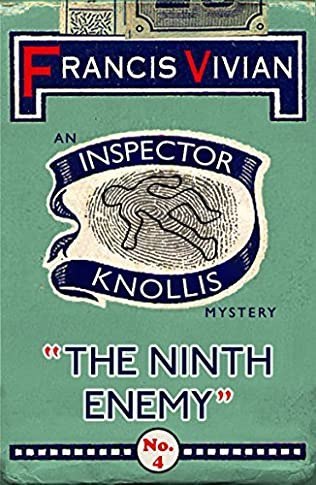
The Ninth Enemy – Francis Vivian
Inspector Knollis of Scotland Yard is the detective creation of Francis Vivian the nom de plume of Arthur Ernest Ashley, and The Ninth Enemy is the fourth in the series. Originally published in 1948, it has been reissued to be discovered afresh by a modern audience by Dean Street Press. I have found his work less consistent than others I have read but with The Ninth Enemy Vivian has managed to produce an intriguing and entertaining mystery.
A policeman is never off duty and a familiar theme of the detective genre is that even when the author’s detective is away on holiday, some foul deed is committed, and the hero is dragged in to solving it. This is the fate that befalls Knollis when he sets out for the countryside in the hope of a quiet weekend. Sadly, his hopes are dashed when Jean Huntingdon finds the body of her husband, killed by a gunshot wound, in dense woods near a river.
Knollis is dragged into investigate and reassembles his usual team, headed by the stolid and reliable Sergeant Ellis. Huntingdon is a local bigwig who despite his philanthropic acts has a number of enemies in the locale, including a firebrand of a left-wing councillor and the Bishop of Northcote. Both were close to the scene of the crime at the time when Huntingdon was shot. Could the Bishop really be in the frame, shades of Winnifred Peck’s classic, Arrest The Bishop? Which appeared a year later.
As investigations proceed, Knollis is nothing if not thorough, motives are revealed and alibis are tested. Huntingdon’s wife, Jean, had lost her previous husband to an untimely end. Was history repeating itself? Huntingdon was no paragon and Knollis uncovers the fact that he was having an affair with another woman. And what has the toy yacht floating on the river near Huntingdon’s body and identical to one given to his young daughter, Dorrie, for her birthday to do with it all? And just when is the right time to collect honey from a hive?
The story is full of plot twists and red herrings and the answers to all these questions are eventually revealed. However, after a bright beginning the pace of the narrative stalls as Knollis gets bogged in the nitty gritty of his thorough, extensive and exhaustive (in all senses of the word) investigation. Get through that and the pace picks up again, even to the extent that the denouement, compared with the middle section of the book, seems positively rushed. The solution is ingenious and difficult to see coming, although Vivian employs no obvious sleight of hand.
For the modern reader imbued with an iota of political correctness, the attitudes betrayed by some of the male characters towards the women are positively antediluvian and raise more than an eyebrow. It seems hard to believe that just over seventy years ago the answer to controlling a high-spirited woman was to spank her bottom. Attitudes, thankfully in the main, have changed but this sticks out like a sore backside.
Lamentable as these attitudes are, there is always the risk that you will encounter something that jars with modern sensibilities. They are creatures of their time as we are of ours. Vivian is not one of the best authors in the Dean Street Press stable, but this adventure is entertaining enough to justify a read.
June 16, 2021
Dead Man Twice
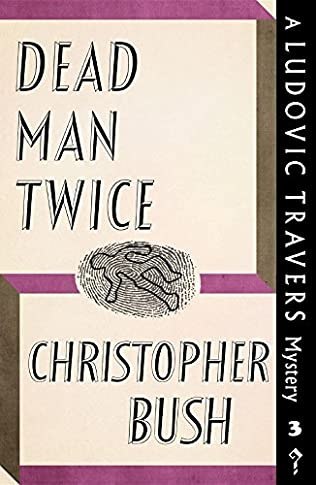
Dead Man Twice – Christopher Bush
This is the third in Christopher Bush’s Ludovic Travers series, originally published in 1930 and now reissued for a modern audience by Dean Street Press. It introduces us to the world of the gentleman boxer in the form of playboy pugilist, Michael France, who is about to have a crack at the World Heavyweight Championship and is the talk of the town.
John Franklin, the ex-Scotland Yarder who heads up the private investigation unit at Durangos Ltd, has been introduced to France’s charmed circle and is entranced. However, he is somewhat dismayed when the boxer contacts him to seek his advice about some threatening letters. When he gets to the house at the appointed time, he and the shifty valet find the body of the butler, Somers, on the floor, presumably poisoned after drinking some whisky laced with cyanide. Beneath his body is a suicide note penned by France. France’s body is found in another room with a gunshot neatly through the centre of his forehead and a small, almost toy-like, gun by his side. Is this a double suicide, a suicide and a murder or a double murder?
Once again, this is a cleverly and intricately plotted mystery with France’s life and relationships with those in his close circle not all that meets the eye, providing several suspects with the motivation to do the boxer in. However, all have seemingly cast-iron alibis and much of the investigation is concerned with testing and breaking the alibis to unmask the culprit.
Leading the investigation for the police is Inspector Wharton who does much of the legwork in this case. Franklin’s knowledge of the suspects, although frankly sketchy as he had only recently made their acquaintance and his almost schoolboyish admiration for them all is a tad annoying, allows him to tag along and involve his friend, the amateur sleuth, Ludovic Travers.
As in the earlier two books Travers plays a low-key part and Wharton is, rightly, wary of allowing an oddball amateur to muddy the waters. Indeed, it is astonishing that any professional investigator would take kindly to the dabbling of an amateur. Unusually for a policeman in this type of fiction, Wharton excels in the investigation, proving himself to be determined, thorough and adaptable, able to adjust and set the right tone to suit the persona of the individual he is dealing with.
However, as the investigation proceeds Wharton warms to Travers and recognises that his more intuitive approach and a readiness to think outside of the box can be immensely helpful. Indeed, it is a combination of Wharton’s hard graft and Travers’ intuition that finally cracks the case with Franklin somewhat surplus to requirements. It is not hard to see that as the series continues the Wharton-Travers combo will come into the ascendancy and the rather annoying Franklin will sail into the sunset.
This was a well-considered, well-written novel that held the reader’s attention and although the list of suspects was rather small, Bush kept the solution to his ingeniously wrought mystery under wraps until the end. I found it a very clever and enjoyable book and cannot wait to read more of his works. Highly recommended.
June 15, 2021
Pursuit Of A Parcel
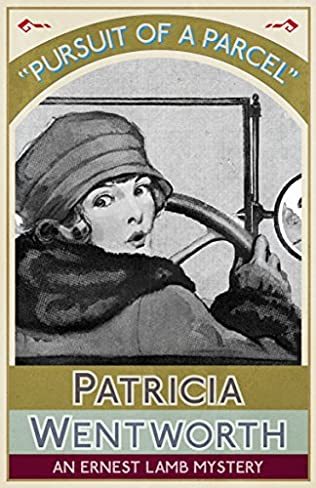
Pursuit of a Parcel – Patricia Wentworth
I seem to be getting a bit of a bee in my bonnet about titles but the best you can say about this, a 1942 romantic thriller from the prolific Patricia Wentworth and reissued by Dean Street Press, is that if you cannot think of a decent one, you may as well describe what is in the tin. The story concerns itself with the hunt for a parcel, no ordinary one, mind you, but the pursuit of a parcel, nonetheless.
For those who like to categorise books into neat piles, this is variously described as the third Inspector Ernest Lamb novel, Miss Silver’s usual detective foil. The good Inspector and his loyal sidekick, Sergeant Abbott, duly feature in this story but do not appear until the latter stages and even then, have only a marginal impact on the resolution of matters. There is little in the way of actual detection. They just appear in the nick of time and wrap things up. You could make a strong case that this is as much a Frank Garrett novel, as Wentworth’s spymaster general appears earlier on in the book and at least has some input into Anthony Rossiter’s actions. Why not just treat the book as a stand-alone?
The story is set during the Second World War and the hero, Anthony Rossiter, is a British secret agent, recruited to find his adopted brother, Cornelius Roos, who is operating in Holland. Cornelius implores Anthony to return to Blighty and take care of a parcel which Cornelius has sent him which contains incriminating material which a leading Nazi does not want to fall into the wrong hands. By the time Anthony returns to England, the poste restante to which the parcel and a wax cylinder containing a recording of some indiscreet remarks has been blown to smithereens by a German bomb. The parcel is then taken by the clerk to his home, which is promptly burgled, but the thieves fail to get their hands on it because it had been removed to an air raid shelter during a bombing raid.
The clerk, realising that the parcel is hot property and that some unsavoury characters acting on behalf of the Nazis are after it, takes it to the home of his employer. The lawyer has been hospitalised after the bombing of his office and so Delia, his somewhat naïve niece, takes possession of the parcel. Naturally, Delia just happens to be the fiancée of Anthony Rossiter and her involvement with the parcel puts her life in jeopardy. Anthony does what any red-blooded Englishman would do and rides to her rescue. It is all touch and go but Delia is made of sterner stuff and more resourceful than it seemed at first.
It is all nonsense, of course, and as a thriller is somewhat lightweight. There is no mystery to resolve, just the personal safety of the protagonists and the parcel and the capture of the nasties to ensure. Much of the plotting is preposterous, unconvincing and heavily reliant upon coincidence. But it is thoroughly entertaining, particularly the first part of the book, and Wentworth does know how to engage with her readers and carry them along, even though they realise at the end that what they have read is as intellectually satisfying as a stick of candy floss.
If you do not want to engage your brain, this is ideal beach fodder.
June 14, 2021
Playing The Percentages

The percentage sign universally adopted, %, looks like the formulation of a vulgar fraction, with a tiny zero either side of a forward slash. It is easy to take it for granted, never wondering how we came to use it in the first place, let alone why the denominator is a single zero rather than 100 or even 00? After all, % as a fraction is a number that cannot be computed. The convention is followed with the per mille sign, two zeroes as the denominator, and the permyriad (per ten thousand) with three zeroes in the denominator. How did it all come about?
The concept of hundredths was well understood by the Romans, the emperor Augustus levying the centesima rerum venalium, a tax on goods sold at auction set at a hundredth of their sale price. In the Middle Ages many monetary systems used a decimal system and computations using a denominator of 100 became the norm. In the 15th and 16th centuries arithmetic texts included computations in hundredths and by the following century hundredths were commonly used to quote rates of interest.
The Italian term, per cento, “for a hundred”, was used to describe this form of fraction. Prior to 1425 all documents were written by hand, a laborious and soul-destroying task for the scribes concerned. Even the most proficient at their trade were prone to make mistakes and were eager to reduce their burden by deploying abbreviations or symbols which could be understood by the recipients of the document. For per cento, the most commonly used abbreviations were per 100, p 100, or p cento. A further refinement was to cross the shaft of the p with a diagonal or horizontal strike to denote that it was an abbreviation of the word per.

The next refinement, evidenced in a manuscript dating from around 1425 to 1435, was to adopt the abbreviation “pc” with a tiny loop or circle to depict the ending -o used in Italian numeration. Two and a half centuries later, an Italian manuscript dating from 1684 shows that the “p” had become little more than a squiggle and that the “c” had changed into a closed circle with a short horizontal stroke above it. Sitting above the horizontal stroke was another closed circle.
It was not until the 19th century that further changes were made to develop the symbol that we know today. The squiggly “p” was dropped and the horizontal stroke was set at an angle with the two zeroes positioned either side of it, one higher on the page than the other. We have never looked back since.
Clearly, though, the genesis of the sign came from the adoption of a commonly understood and accepted abbreviation for “per centum” than the desire to represent the number as a fraction of a hundred, hence the single zeroes. It makes sense when you know!
June 13, 2021
Device Of The Week (4)

Wearing a mask has been a source of liberation for many of us. Under the cloak of a piece of cloth we have been able to give vent to a wide range of facial expressions of which the object of our anger, disdain or frustration has been blissfully unaware. It will take a lot of readjustment if and when the wearing of masks is no longer de rigueur.
For others, though, the inability to display facial expressions to others has been a source of frustration. Where there is a discernible gap in the market, someone will seek to fill it and this is what the UK-based Tail Company is seeking to do.
They have been making creating lifelike, animated tails since 2005, but are shortly to move artificial tails into the 21st century by launching a Bluetooth-enabled animatronic tail which can be controlled by a phone app. miTail provides the wearer with settings to show that they are frustrated and tense or calm and relaxed. Other moves include the Short Wag, the Happy Wag and the Erect Tremble.
If that is not enough, miTail comes with USB-C fast charging, Powerbank support so that you can keep it going for up to ten hours, and it will sync with EarGear, the Tail Company’s animatronic ears system.
I cannot help thinking that it comes with a default setting, making the wearer look a bit of a prat.
It will be available in August, when facial expressions may be on view again. Timing is everything.
Thereby hangs a tale!
June 12, 2021
Interview Of The Week

With life gradually returning to some semblance of normality, an easy option for a harassed editor is to send a journalist out to report on how people are adapting to their new found freedoms. In truth, the results can be rather tedious and unenlightening.
An enterprising editor of Denmark’s Radio 4 sent out a young journalist, Louise Fischer, to report on the reopening of a swingers’ club by the name of Swingland in Ishøj, just outside Copenhagen. Louise spent several hours in the club, chatting at the bar over a glass of wine and really got into the swing of it all.
Moving onto a large bed she proceeded to interview one of the guests while having sex with him, the interview punctuated by the odd moan. During the segment that was aired, Fischer asks the man “what are you seeing right now?” to which he replies a “gorgeous woman who has not tried being in a swinger club before”.
The interview was broadcast and has met with generally favourable reviews. Fischer’s take was that it was enjoyable, but not the best sex of her life, although the members did treat her like a goddess. Tina Kragelund, head of the station’s news, said that the station stood behind Fischer’s interview and that it was “cool when journalists try to make the stories in a different way”.
That one is going to be hard to beat.
June 11, 2021
The Devil’s Dictionary (5)

I have long run a mile from engaging in any form of exercise. In discussing dawn, a time of day I rarely see, Ambrose Bierce in The Devil’s Dictionary (1906) makes the following comments; “certain old men prefer to rise about that time, taking a cold bath and a long walk with an empty stomach, and otherwise mortifying the flesh. They then point with pride to these practices as the cause of their sturdy health and ripe old years; the truth being that they are hearty and old, not because of their habits, but in spite of them. The reason we find only robust persons doing this thing is that it has killed all the others who have tried it”. I am with Bierce on that one.
When I rise I much prefer sitting down to something to eat, performing “successively (and successfully) the functions of mastication, humectation and deglutition”. I call the first meal breakfast but well-travelled Americans in Bierce’s day called it a dejeuner, “the breakfast of an American has been to Paris”. It all helps the process of digestion to occur, “the conversion of victuals into virtues. When the process is imperfect, vices are evolved instead”. The expectation is that the fare will be edible; “good to eat, and wholesome to digest, as a worm to a toad, a toad to a snake, a snake to a pig, a pig to a man, and a man to a worm”. The circularity of life, indeed.
At the table I will deploy a fork, defined by Bierce as “an instrument used chiefly for the purpose of putting dead animals into the mouth”. He then goes to address the great knife or fork debate. “Formerly the knife was deployed for this purpose, and by many worthy persons is still thought to have many advantages over the other tool, which, however, they do not altogether reject, but use in charging the knife. The immunity of these persons from swift and awful death is one of the most striking proofs of God’s mercy to those that hate Him”. Amen to that.
June 10, 2021
Martin Miller’s Winterful Gin

Even if you are an established name in the gin world and celebrated your twentieth year in business last year, the ginaissance has spawned so many rivals that you cannot afford to rest on your laurels. Partly as a way to celebrate their twentieth anniversary and partly to ensure that their name was foremost in the public’s mind, Martin Miller released two limited-edition gins, Summerful and Winterful. I have already reviewed the Summerful gin and now it is time to put Martin Miller’s Winterful Gin under the spotlight.
As its name suggests, the gin is supposed to evoke the essence of wintertime. Martin Miller’s marketing differentiator is that it combines the best of England gin with the finest natural Icelandic water in its products and for Winterful they have chosen to use botanicals that are particularly associated with mulled wines in each of the countries. In Iceland mulled wine goes by the deliciously onomatopoeic name of Jóla Glőgg.
For their original gin, Martin Miller uses a twin distillation process, distilling the juniper and earthier elements separately and then the citrus elements separately before combining them. In this way, they claim, they can achieve a better balance between the juniper and citrus, resulting in a smoother more satisfying drink. In creating Winterful there is a third distillation involving cinnamon, mandarin orange peel, and other botanicals including cardamom, the flavours chosen to reflect winter, mulled wine and the warming flavours you associate with and require at that time of year.
This is very much their original gin plus, an impression emphasised by the fact that they use the same tall slim octagonal shaped bottle with a long neck. The differentiator is that they use a maroonish purple colour on their labels. There is nothing wrong with that. After all, if you have made a gin that has stood the test of time, there is no point in throwing it out with the bathwater just to create a seasonal variant.
On removing the silver screwcap, my nose took an intense hit of orange and cinnamon. These were certainly the smells I associated with mulled wine and there was no mistaking their presence. I began to worry that they might completely overwhelm the more subtle and complex blending of juniper and citrus I have come to associate with Martin Miller’s. My fears were somewhat assuaged when I pored the crystal-clear spirit int the glass. In the mouth the first sensation was of sweetness, before more intense spicy and sweet flavours emerged. The mandarin reappeared towards the end of the sip and the aftertaste was long and pleasantly spicy and warming.
The juniper may have got a bit lost along the way, but it made for a satisfying drink that met its brief and did what it promised in the marketing blurb. At 40% ABV it made for a pleasant opener for an evening’s drinking and I could easily see what it has been highly rated. I much preferred it to its sister drink, Summerful.
Until the next time, cheers!
June 9, 2021
It Might Lead Anywhere
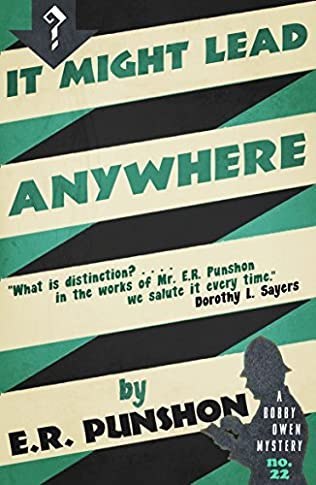
It Might Lead Anywhere – E R Punshon
E R Punshon, a sadly neglected writer of detective fiction, had many strengths but coming up with a catchy and attention-grabbing title was not one of them. This has to be one of the naffest in all publishing history but, to be fair to him, it is a phrase his detective creation, Bobby Owen, does say several times when about to follow up another bewildering clue. Published originally in 1946 and now reissued for a modern readership to discover by the enterprising Dean Street Press, it is the twenty-second (out of thirty-five) in Punshon’s Bobby Owen series.
Although enjoyable, this is not one of Punshon’s best, not least because the plot is rather thin and, frankly, somewhat improbable and the list of likely culprits limited. On the plus side, these limitations do allow Punshon to develop the character of Owen more than he does in the other books of his that I have read. Even so, Owen is not a larger-than-life character with an enormous ego or one with eccentric traits, more of diligent and thorough pursuer of the truth, content to follow leads wherever they may take him. His modus operandi is to follow each lead and eliminate suspects until he arrives at the culprit and is able to explain the motivation behind the crime.
This is what the book is full of, alibis are established and checked, statements are taken and corroborated. It might seem dull fare, as dull as the spam-laden menu Owen peruses in a restaurant, but Punshon has the good sense to keep the narrative moving at pace and manages to construct an intriguing enough case from relatively unpromising material.
Punshon is good at creating atmosphere and I enjoy picking up on the realities of life in the dog days of the Second World War; rationing, even of petrol for police officers, food shortages and unimaginative menus, the intricacies of the blackout regulations. Owen’s long-suffering wife, Olive, makes several fleeting appearances, playing the role of a sounding board for some of Owen’s theories as his investigations progress and not averse to throwing in some suggestions of her own. Somewhat to Owen’s surprise, she takes umbrage when he informs her that a pretty girl involved in the case had fluttered her eyelashes at him and he cannot understand why. For a keen observer of human traits and characteristics, he can be somewhat obtuse when it comes to his nearest and dearest.
Although it is not in his manor, Owen breaks up a kerfuffle at a meeting at which Duke Dell, a former boxer, is preaching about what he calls The Vision. Although Alfred Brown is an adherent of Dell’s, the boxer throws him into the river with such force that his head bleeds. The next day Brown is found dead at his home, having been beaten with a poker. Owen persuades the local Chief Constable to allow him to take charge of the case and as he proceeds, he finds that the case is not as cut and dried as it may have seemed, despite Dell’s eccentricities, and that there are other reasons for Brown meeting his maker much earlier than anticipated.
Inevitably, Owen makes sense of it all and justice is done. I cannot help thinking the book reflects the state of England at the time it was published, exhausted, weary, and waiting for a new lease life. I hope Punshon gets his enthusiasm back in time for Owen’s next adventure.
June 8, 2021
Invisible Death
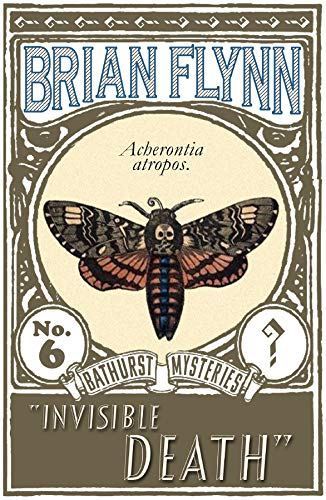
Invisible Death – Brian Flynn
This is the sixth in Flynn’s excellent Anthony Bathurst series, originally published in 1929 in the UK – the US edition did not appear until 1936 – and reissued for a modern readership to discover by the indefatigable team at Dean Street Press. It also had an alternative title, The Silver Troika. Both he alternative title and the cover illustration on the reissue could be construed as giant red herrings.
What an enjoyable romp it is, more of a thriller than a standard murder mystery. By this time Flynn had changed publisher and Bathurst seems to have undergone a character transformation, becoming more of a man of action with a certain gung-ho attitude than an intellectual sleuth and is once more ably aided and abetted by his lawyer friend, Peter Daventry, who is even more of a brawler and a crack shot to boot. They also seem to have swallowed and inwardly digested Bertie Wooster’s lexicon of upper-class slang, their dialogue peppered with turns of phrase that would not have embarrassed P G Wodehouse.
There is also a very considerable nod of the head to Conan Doyle. The Silver Troika, a band of evil Russian terrorists, heavily implicated in the murder of the Tsar and on the trail of some incriminating documents and jewellery, seem to have come straight out of The Five Orange Pips. They even insist that their victim leaves the papers in a case on the tennis court at midnight. And if you didn’t get the reference, they are already burnt, of course.
Bathurst is summoned down to Swallowcliffe Hall by Constance Whittaker to help protect her husband, the Major, from an unnamed threat. It turns out that Major Whittaker was operating in revolutionary Russia and was instrumental in eliminating a number of the Red terrorists. The Silver Troika are after his blood.
Despite Bathurst’s best efforts, he fails in his principal objective because the Major suddenly drops dead, poisoned, despite no one being near him at the time. Had the Silver Troika effected their deadly revenge, but how did they do it? Or what about the eccentric American entomologist, who keeps appearing on the scene or a deadly butterfly that fluttered around the room? And why are the Troika so beastly to Whittaker’s butler? Has he an even darker past than his association with and unwavering loyalty to the Major would seem to suggest?
With considerably more violence than you would expect from a normally genteel murder mystery of this era, the tale takes some alarming and unforeseen twists. Although Flynn plays fair with his readers if only by allusion and hints, it is almost impossible to guess who the murderer was. The method by which the murder was committed is highly ingenious and is worth reading the book just for that. Justice of a sort prevails at the end by which Bathurst has more than amply demonstrated his talents and ability to solve a knotty problem, even if he left Constance a widow in the process.
It is great fun and Flynn’s style is so engaging that I found I raced through it in almost record time. That is the hallmark of a good murder mystery cum thriller.



